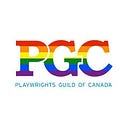Featured Member — Shauntay Grant

**Each month we interview member playwrights to share their work, stories and inspiration with the community. We recently spoke with Shauntay Grant, a Nova Scotian playwright, poet, performance artist, and children’s author. She served as Halifax’s third poet laureate, and she is an Assistant Professor of Creative Writing at Dalhousie University. Her stage play “The Bridge” premiered at Neptune Theatre in 2019, a co-production between 2b theatre and Neptune Theatre in association with Obsidian Theatre. The Bridge was nominated for 11 Robert Merritt Awards, taking home four at last month’s virtual awards show including the award for Outstanding New Play By A Nova Scotian Playwright. Shauntay’s other honours include a Joseph S. Stauffer Prize in Writing and Publishing from the Canada Council for the Arts, a Poet of Honour Prize from Spoken Word Canada, and a Governor General’s Literary Award nomination. Her love of writing stretches back to her storytelling roots in Nova Scotia’s historic Black communities, and her artistic practice embraces African Nova Scotian and African diasporic history and folk culture, as well as contemporary approaches to literature and performance.
In honour of National Poetry Month, Shauntay Grant reflects on her poetic approach to playwriting.
What interested you in playwriting?
One morning I woke up and started piecing together a handful of old poems. I’m not sure what led me do this but in those early hours something compelled me to look for patterns, connection, parallel themes among them. I spent hours at the kitchen table, cutting the poems up and piecing them together, extracting narratives and setting the language down. And after what felt like forever I decided that I had in front of me the bones of what I thought could be a play. And this is how I first learned to be a playwright. Not by rote or reading or writing workshops — that came later. My first meaningful encounter with playwriting was through poetry.
How important is the aspect of poetry in your work?
Poetry is at the heart of all my writing. Be it poems, plays, picture books… my approach is always with the sensibility of a poet concerned with voice and cadence, metaphor and symbolism, etc. My first play grew out of a stack of old poems. My most recent work — a three-act drama called The Bridge — was inspired by a Son House cover of the old gospel blues song/poem John The Revelator, and the King James Version of The Song Of Solomon which by itself is a set of lyrical poems. And one of the projects I’m working on now is loosely adapted from a collection of poems.
What are you working on these days?
The Bridge has tour dates lined up for the fall, and Playwrights Canada Press will publish a print version of the play in 2021. I’m also working on a couple of other projects including a theatrical adaptation of a collection of folktales, and a one-woman play featuring Zimbabwean musician Hope Masike — a project that pairs our respective interests in traditional mbira music and spoken word, and underscores our mutual interest in poetry. The project is loosely adapted from Hope’s debut collection of poems Ask Me Again. It’s in its very early stages, but I’m really excited about how things have been developing so far.
What do you appreciate most about being a PGC member?
I appreciate being connected to a community of playwrights, and the opportunities for connecting, collaborating, and sharing that come with that. I participated in the 2019 Atlantic Edge Conference and, apart from having an opportunity to read from The Bridge, I was able to meet new playwrights and reconnect with artists I hadn’t seen in a while. I also appreciate PGC’s guidance around contracts and support for readings through PlayConnect.
What are some of your writing interests outside of playwriting and poetry?
I love writing books for children. I’ve published mostly picture books and a board book, but I’m also working on a middle grade novel in verse. Almost all of my kids books have poetic text, be they rooted in rhyme like My Hair Is Beautiful, or gentle and lyric like Africville. I’m also drawn to projects that merge poetry with other artistic genres like music and the visual arts. I’ve collaborated with musicians in theatre, and with visual artists on multimedia and multidisciplinary instillations for exhibition at the Art Gallery of Ontario, the Dalhousie Art Gallery, and the Canadian Museum of Immigration at Pier 21.
What’s your favourite play?
I don’t think I could pick just one, so many works I admire. But if I have to name one that’s been instrumental in my path as a playwright it’d be Ntozake Shange’s classic choreopoem For Coloured Girls Who Have Considered Suicide When The Rainbow Is Enuf. The print publication of the play was gifted to me many years ago by a fellow artist who remarked at the time that, “This is the first thing I ever read that made sense.” I was probably in my late teens or early twenties, wrapping up a summer job as a researcher on a local theatre project. I had very little exposure to the world of professional theatre, and was more interested in poetry and music at the time. But I think that’s why I was drawn to Shange’s work– it wasn’t just theatre or poetry or music, it was all of those happening at once.
Connect with Shauntay online at shauntaygrant.com or on Facebook facebook.com/shauntaygrant
Disclaimer: Playwrights Guild of Canada (“PGC”) is a national arts service mandated to engage and grow an active Canadian writing community. We promote Canadian plays around the world to advance the creative rights and interests of professional Canadian playwrights for the stage. The views of our members are their own. The opinions of PGC as an association remain neutral.
